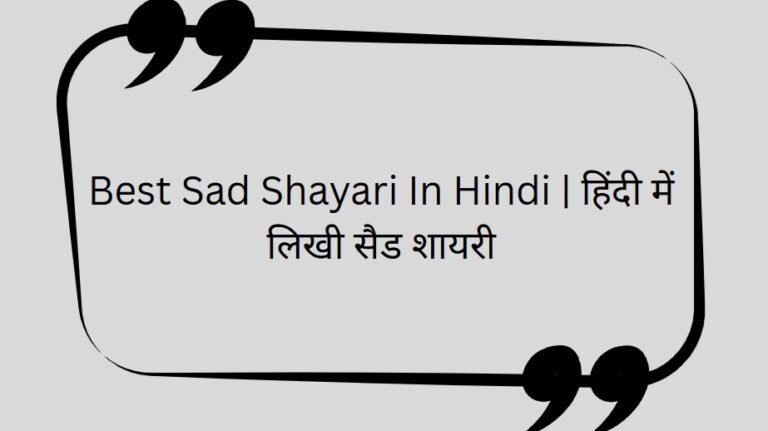
urdu shayri
Introduction to Urdu Shayri
Urdu shayari, a form of poetry that is deeply rooted in the cultural heritage of the Indian subcontinent, has captivated hearts for centuries. Known for its eloquence, rhythm, and depth of emotion, shayari is much more than just verse – it is an art that speaks directly to the heart. Whether it is love, pain, joy, or despair, Urdu shayari communicates complex emotions in a manner that resonates with every listener. This article explores the rich history, elements, and cultural significance of Urdu shayari, while also sharing some of the finest verses that define the genre.
Table of Contents
The Origins and Evolution of Urdu Shayari
The history of Urdu shayari can be traced back to the early days of the Mughal Empire, when Persian was the dominant language of the court. During this period, Persian poetry greatly influenced the development of Urdu poetry. The term “shayari” comes from the Persian word “shair,” which refers to a poet, and the craft of shayari revolves around the art of creating verses that express profound emotions.
The rise of Urdu as a language, particularly in the 18th century, gave birth to a unique style of poetic expression that blended Persian influence with the local vernacular. Urdu shayari began to flourish under the rule of the Mughals and continued to evolve over the centuries, with poets like Mirza Ghalib, Allama Iqbal, Faiz Ahmed Faiz, and Ahmed Faraz making significant contributions to its development.
While traditional shayari often involved themes of love, separation, and longing, contemporary poets have expanded the genre to include a wider range of emotions, from social and political issues to personal struggles and triumphs.
The Core Elements of Urdu Shayari
Urdu shayari is known for its intricate balance of rhyme, rhythm, and emotional depth. The appeal of shayari lies not only in the choice of words but in the way they are arranged to create a melodic flow. Here are some of the key elements that define Urdu shayari:
- Taseer (Impact): A great shayari is one that leaves a lasting impact on its listener. The emotional intensity of the words must resonate with the audience, invoking deep feelings of joy, sorrow, love, or melancholy.
- Alfaz (Words): The choice of words in Urdu shayari is crucial. Urdu is a language rich with metaphors, similes, and expressions, which give shayari its unique ability to evoke vivid imagery and emotions. The subtleties in language make it an effective medium to express feelings that might be hard to articulate otherwise.
- Zaat (Personality): Shayari often reflects the personal experiences, thoughts, and emotions of the poet. This gives the poetry a deeply authentic and relatable quality. The poet’s personality shines through their words, offering insights into their worldview and inner life.
- Maqta and Sher: A typical shayari consists of couplets, or “sher,” with each couplet expressing a complete thought or sentiment. The “maqta” is the final couplet in a shayari, often including the poet’s pen name, adding a personal touch and often reflecting the poet’s feelings of closure or resolution.
The Structure of Urdu Shayari
The beauty of Urdu shayari lies not just in its emotional resonance but also in its structure. A shayari usually consists of a couplet (sher), with each line expressing a specific idea or emotion. The rhyme scheme and rhythm in Urdu shayari are what make it melodious and pleasing to the ear. The length and rhythm of each line can vary, but the careful use of meter and rhyme is what makes a shayari stand out.
Writing Urdu Shayari
Writing Urdu shayari requires both skill and sensitivity to the nuances of language. A poet must be adept at playing with words, using metaphors, and structuring verses that evoke emotional responses from the reader. To write impactful shayari, a poet must:
- Focus on Emotion: The emotional core of the shayari should be its central focus. Whether expressing love, pain, or longing, the feelings must come through strongly.
- Use Rich Imagery: One of the hallmarks of great shayari is its ability to paint vivid pictures through words. Using metaphors, similes, and symbolic language enhances the emotional impact of the poetry.
- Keep it Concise: While shayari can be long, the most impactful verses are often concise. A shayari should express its idea clearly and deeply in just a few lines.
- Play with Rhythm: The musicality of the verse is crucial. The use of rhyme, meter, and rhythm gives shayari its lyrical quality and emotional weight.
The Influence of Urdu Shayari on Culture
Urdu shayari is deeply embedded in the cultural and social fabric of South Asia. It has influenced art, literature, and popular media, especially in Bollywood, where songs inspired by shayari have been a staple in romantic films. Whether through film dialogues, ghazals, or poetry readings, shayari has found its way into everyday life, providing a means of expressing love, pain, and longing.
Shayari is also an integral part of social gatherings, particularly mushairas (poetry gatherings), where poets gather to recite their works. These events have been a cherished part of literary culture in India and Pakistan, providing a platform for poets to share their thoughts and connect with the audience. Over the years, shayari has become a universal language of expression, transcending regional boundaries and making its mark on global culture.
10 Best Shayari
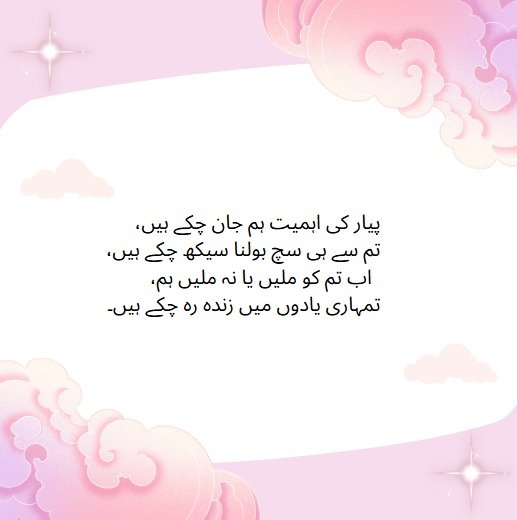
پیار کی اہمیت ہم جان چکے ہیں،
تم سے ہی سچ بولنا سیکھ چکے ہیں،
اب تم کو ملیں یا نہ ملیں ہم،
تمہاری یادوں میں زندہ رہ چکے ہیں۔
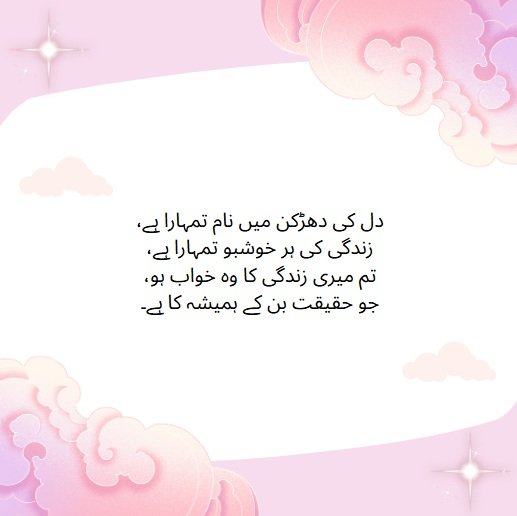
دل کی دھڑکن میں نام تمہارا ہے،
زندگی کی ہر خوشبو تمہارا ہے،
تم میری زندگی کا وہ خواب ہو،
جو حقیقت بن کے ہمیشہ کا ہے۔
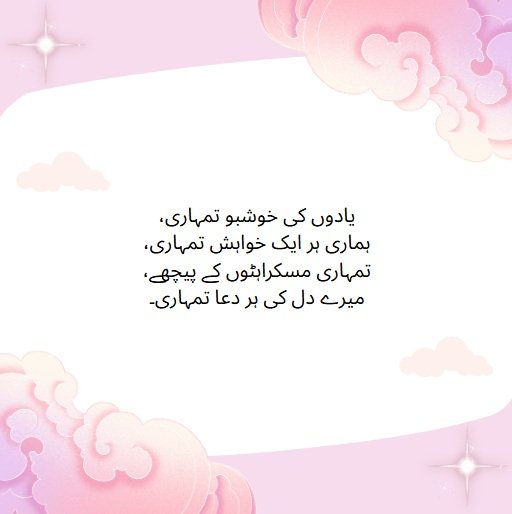
یادوں کی خوشبو تمہاری،
ہماری ہر ایک خواہش تمہاری،
تمہاری مسکراہٹوں کے پیچھے،
میرے دل کی ہر دعا تمہاری۔

ہمیں محبت میں شکایت نہیں ہے،
صرف تم سے دل لگانے کی امید ہے،
ہر دعا تمہاری ہو،
ہمیں بس تمہاری ضرورت ہے۔

یہ جو ہم نے تجھ سے وعدہ کیا ہے،
وہ وعدہ ہمیشہ ہمارے دل میں چھپا ہے،
کہ جب تک تم ہو، ہم جیتے ہیں،
تمہاری مسکراہٹ میں ہم بستے ہیں۔
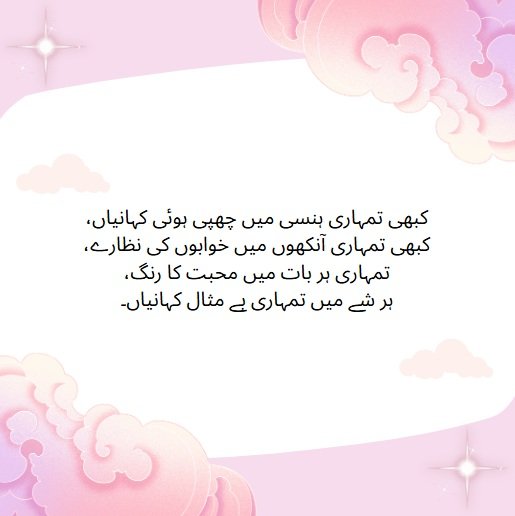
کبھی تمہاری ہنسی میں چھپی ہوئی کہانیاں،
کبھی تمہاری آنکھوں میں خوابوں کی نظارے،
تمہاری ہر بات میں محبت کا رنگ،
ہر شے میں تمہاری بے مثال کہانیاں۔

خفا ہو کے جانے والے،
تمہاری زندگی میں خوشی ہو،
کہ تمہیں یاد رکھے گا یہ دل،
جو تمہاری یاد میں لٹ چکا ہے۔
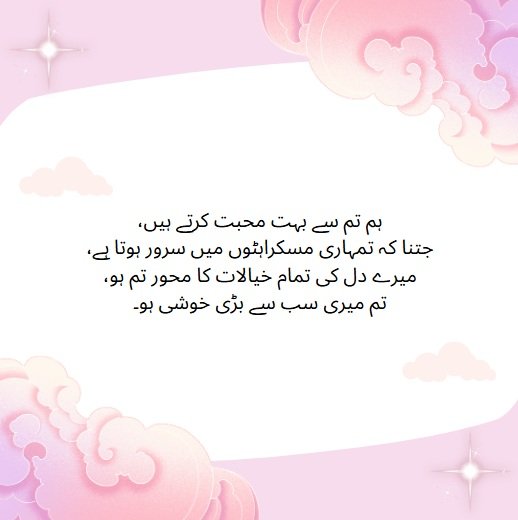
ہم تم سے بہت محبت کرتے ہیں،
جتنا کہ تمہاری مسکراہٹوں میں سرور ہوتا ہے،
میرے دل کی تمام خیالات کا محور تم ہو،
تم میری سب سے بڑی خوشی ہو۔
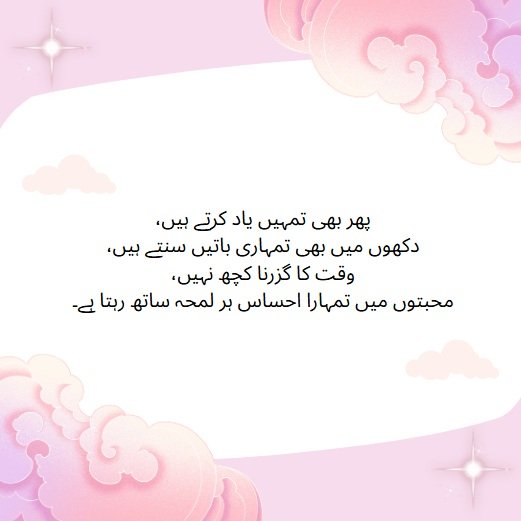
پھر بھی تمہیں یاد کرتے ہیں،
دکھوں میں بھی تمہاری باتیں سنتے ہیں،
وقت کا گزرنا کچھ نہیں،
محبتوں میں تمہارا احساس ہر لمحہ ساتھ رہتا ہے۔

خوابوں میں تمہاری مسکراہٹوں کا باندھنا،
میری زندگی کا سب سے حسین سفر ہے،
تمہاری یادوں کی ہر ایک دھیما خیال،
میرے دل کی سب سے گہری بات ہے۔
Conclusion
Urdu shayari is more than just an art form; it is a window into the human soul. Its ability to convey emotions in the most delicate and profound ways has made it a timeless tradition that continues to resonate with people worldwide. Whether it’s in the poetic musings of a great poet or the heartfelt expressions shared between lovers, Urdu shayari remains a significant part of South Asian culture, providing a means of both personal expression and connection to the greater world.
Also read – Love Shayari for Husband in Hindi

